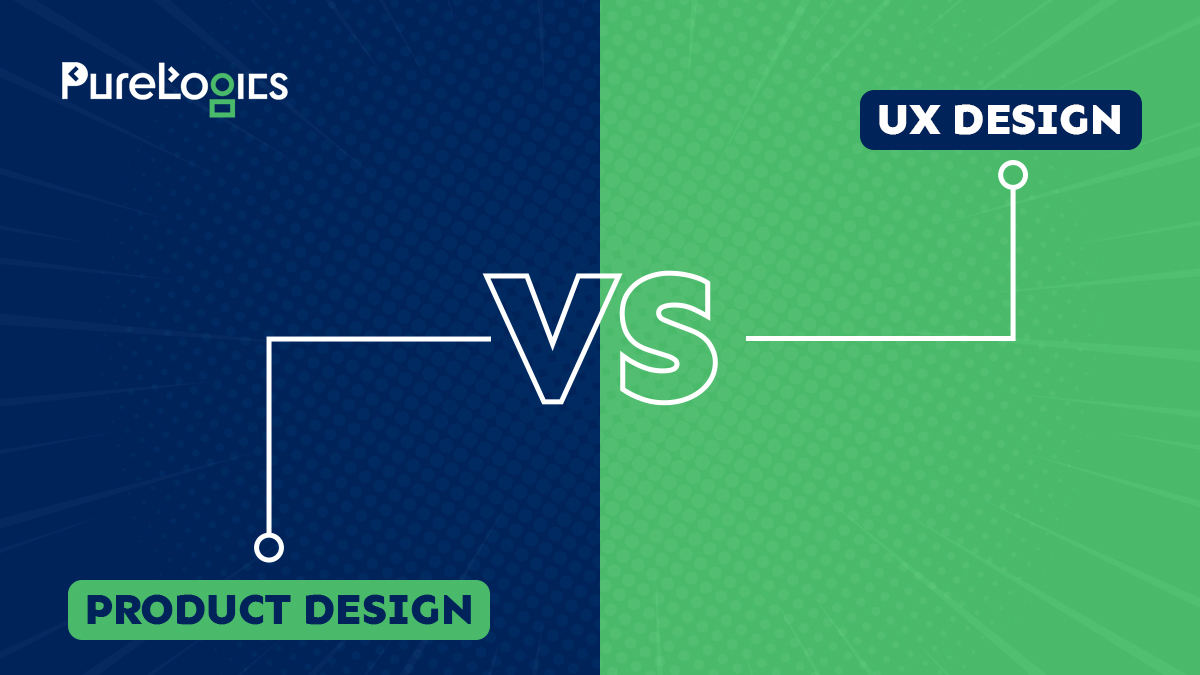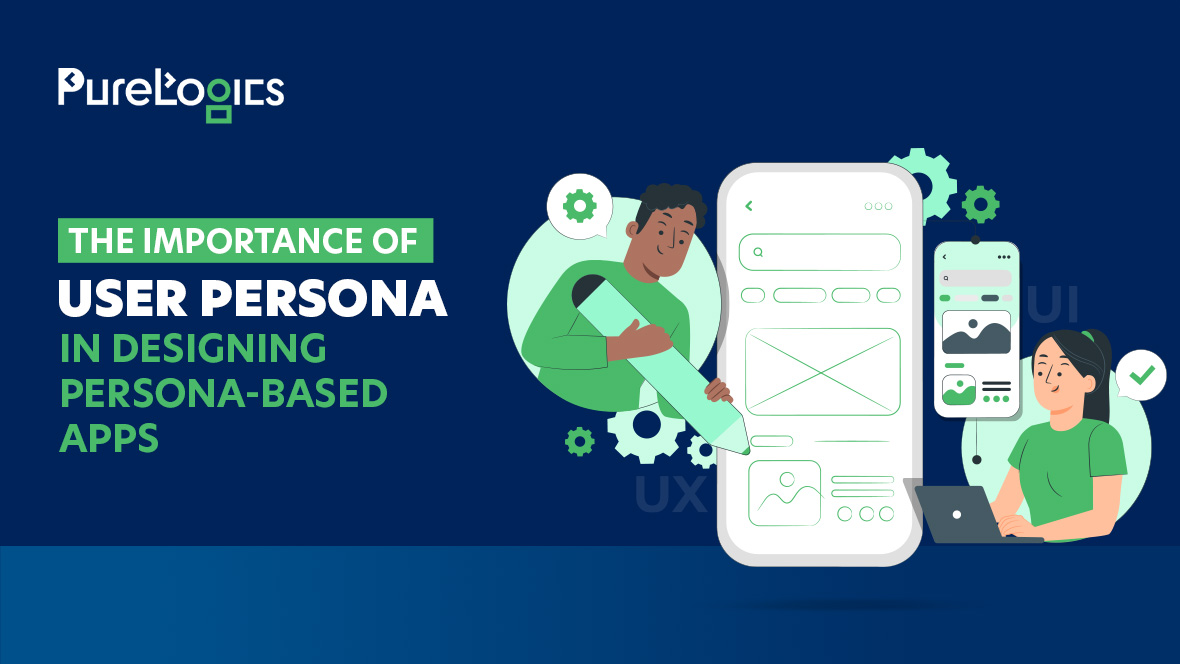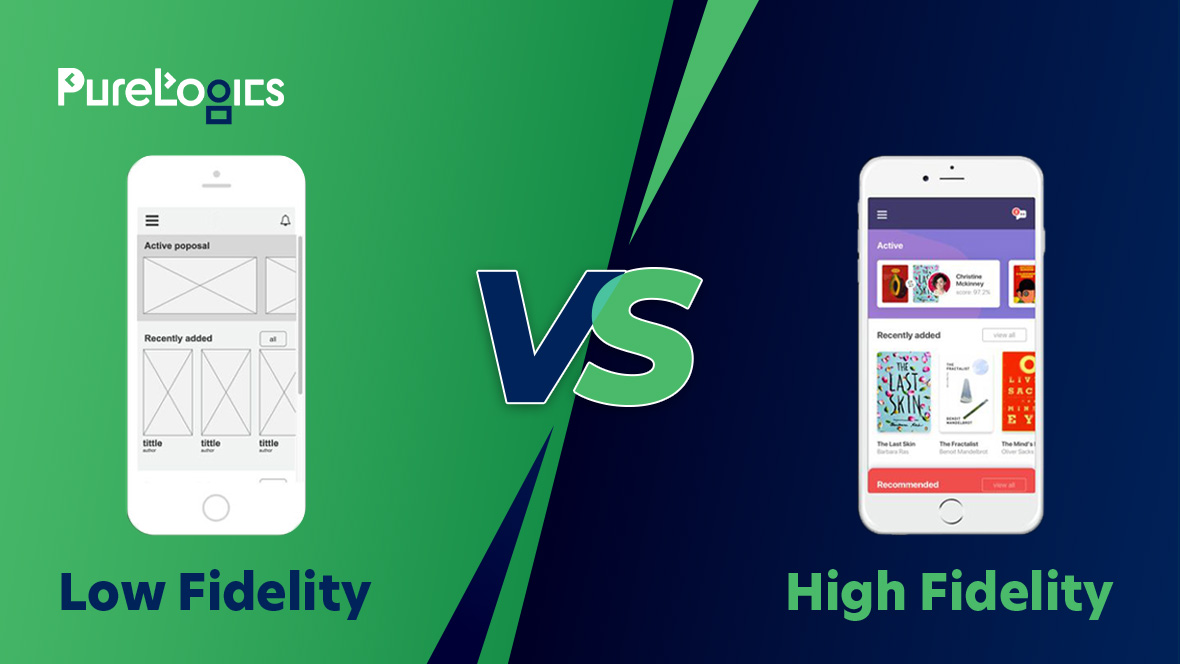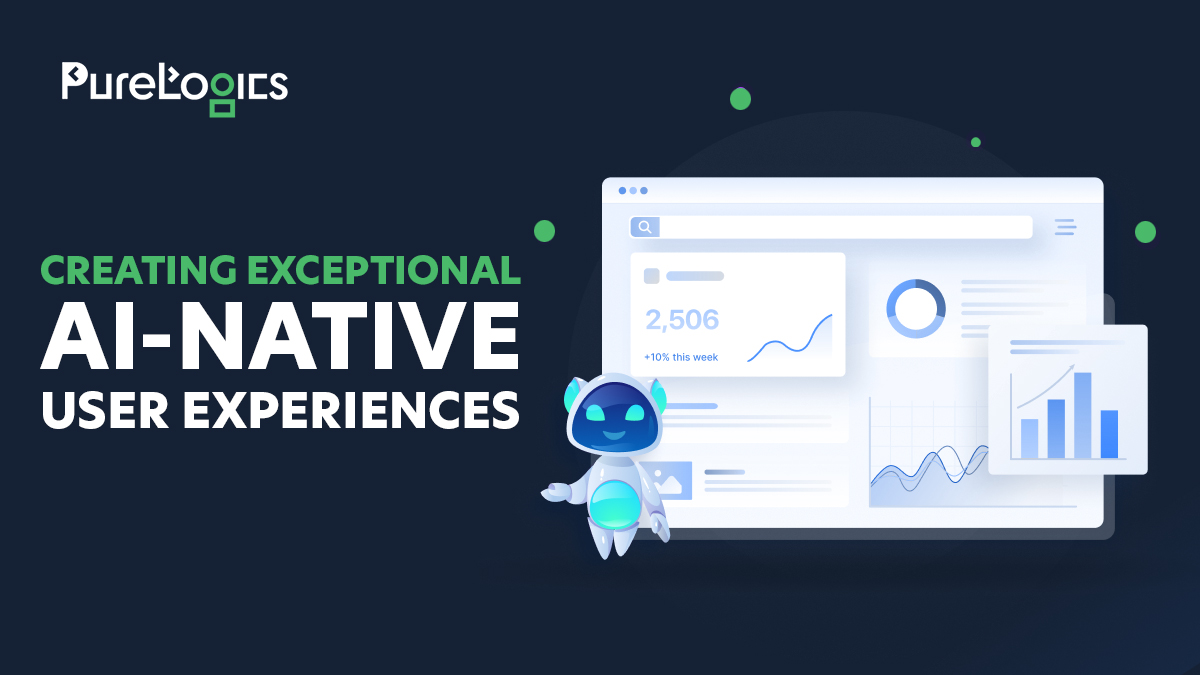Have you ever been amazed by any product and said, “Wow! What an awesome idea. I’m also a smart person, but why did I not think like that?”
We all have had such moments of wonder and admiration for creatively designed products. But did you ever think about what, in reality, goes into creating such top-notch experiences? This is where the role of Product Design and UX Design comes into play.
UX design and product design are frequently used together. But many people don’t know the actual difference between both terms and are confused in the debate of “Product Design vs UX design.”
If you want to know about these terms in detail, keep reading this blog post. Here you will know the in-depth details of product design and UX design, their roles, process, and their strong impact on your business as well as user behavior.
Product Design vs. UX Design: What’s the Real Difference?
Before we dive into the details of this Product Design vs UX Design debate, let’s first understand the basic differences between both disciplines.
Product Design
Product design is all about developing a product from scratch to the end. It is an integrated approach to envisioning, building, and refining a physical or digital product that users interact with.
No matter what your product type is, product design is an all-inclusive process that involves market research, problem identification, product development, solution brainstorming, and many other related tasks. The superior and innovative product designers always aim to focus on aesthetics, functionality, and aligning a product with its brand’s core values.
UX Design
On the other hand, User Experience (UX) Design is all about ensuring that a user gets a meaningful and smooth user experience with a website or an app.
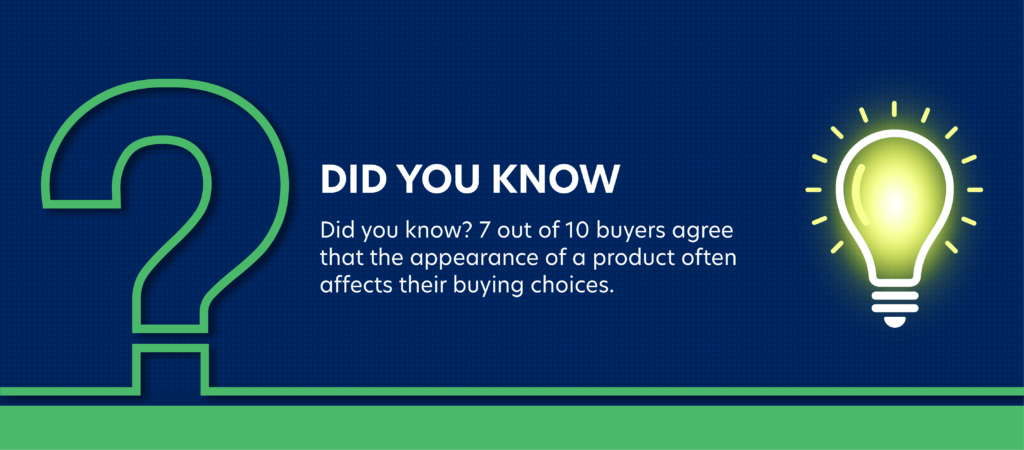
It aims to focus on the overall design process of acquiring and blending a product that has all important aspects like design, usability, functionality, and branding. UX designers follow user behavior and psychology to create user-friendly, and brand-oriented interfaces and experiences.
Product Design Process: From Idea to Realization
Product design is a comprehensive process. It begins with ideation and evolves through multiple stages, ultimately leading to the creation of a physical or digital product. Let’s break down this process!
Idea Generation
The product design process starts with a brilliant idea. Product designers brainstorm, research, and gather inspiration to formulate a concept that addresses a specific problem or fulfills a need.
Concept Development
Once the idea was solidified, designers started creating a detailed concept. This explains the features of a product, its functionalities, and its alignment with brand identity and company objectives.
Prototyping
The first two steps of the product design process are mostly theoretical. Building product prototypes is a crucial and practical way in the design process. In prototyping, product designers test and validate these theories. This process includes three steps: prototype, review, and refine.
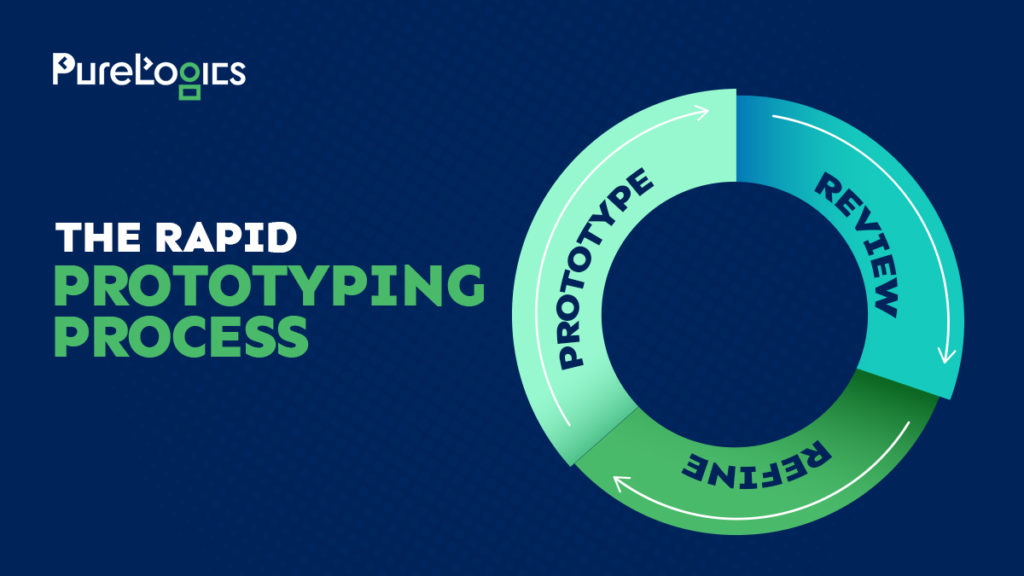
A prototype can be a physical model or a digital representation of a product. It allows designers to test product functionality and gather feedback.
Iterative Design
Like in all processes, feedback also plays a significant role in the product design process. Designers continually iterate on their prototypes. They keep refining and improving the product according to the user input and testing results.
Production and Manufacturing
Once designers select the design, they move into the production and manufacturing phase. It includes sourcing materials, manufacturing, and ensuring the highest levels of quality control.
User Testing
User testing is not limited to one step only. It continues even after the product development. The goal of continuous user testing is to ensure that a product actually meets the expectations of the target audience.
Launch and Marketing
The final step of the design process is launching the product into the market. The product designers collaborate with marketing teams to promote it effectively and quickly.
Even though a product launches, that doesn’t mean that the product design process is over. In reality, product design is a continuous process that lasts as long as the product is in use. The team takes the customer feedback and uses it to improve the product accordingly.
Product Design in Technology
In the tech industry, product design plays a leading role in the development of innovative and user-friendly digital solutions. All modern innovations of the present era like smartphones, laptops, websites, web apps, mobile apps, etc., are the results of the product design process.
With every passing day, the demand for this skill is getting more popular. It is a reason every company is leaving no stone unturned to outshine its competitors by offering the most unique, functional, and user-friendly product.
UX Design: Understanding the User Perspective
As the name suggests, User Experience (UX) Design focuses on the user experience with a product or service.
It is the design of the elements that analyzes the emotional and practical aspects a user has with a product. The primary goal of UX design is to create seamless, efficient, relevant, pleasant, and all-around intuitive experiences for users.
“User experience covers all aspects of the customer engagement with the company, its offerings, and its services.” — Don Norman, Father of UX
UI Design: An Important Part of UX Design
User Interface or UI Design closely relates to UX Design. UX design focuses on the overall user experience; however, UI design deals with the visual and interactive elements that users actually encounter.
Let’s take an example to understand the difference between UX design and UI design.
You’re using a mobile banking app. Its overall experience, like how easy it is to navigate, locate features, and make transactions, all these things come under the umbrella of UX Design.
On the other hand, UI Design deals with the specific elements you see on your mobile screen such as buttons, menus, fonts, colors, and the layout of the app. So, it is both UX and UI Design that work together to ensure a top-notch user experience.
According to internationally recognized reports, companies that prioritize UX design increase their conversion rates by up to 400%.
Product Design vs. UX Design: Head-to-Head Differences
Look at the following table; it will help you better understand the major differences between product design and UX design.
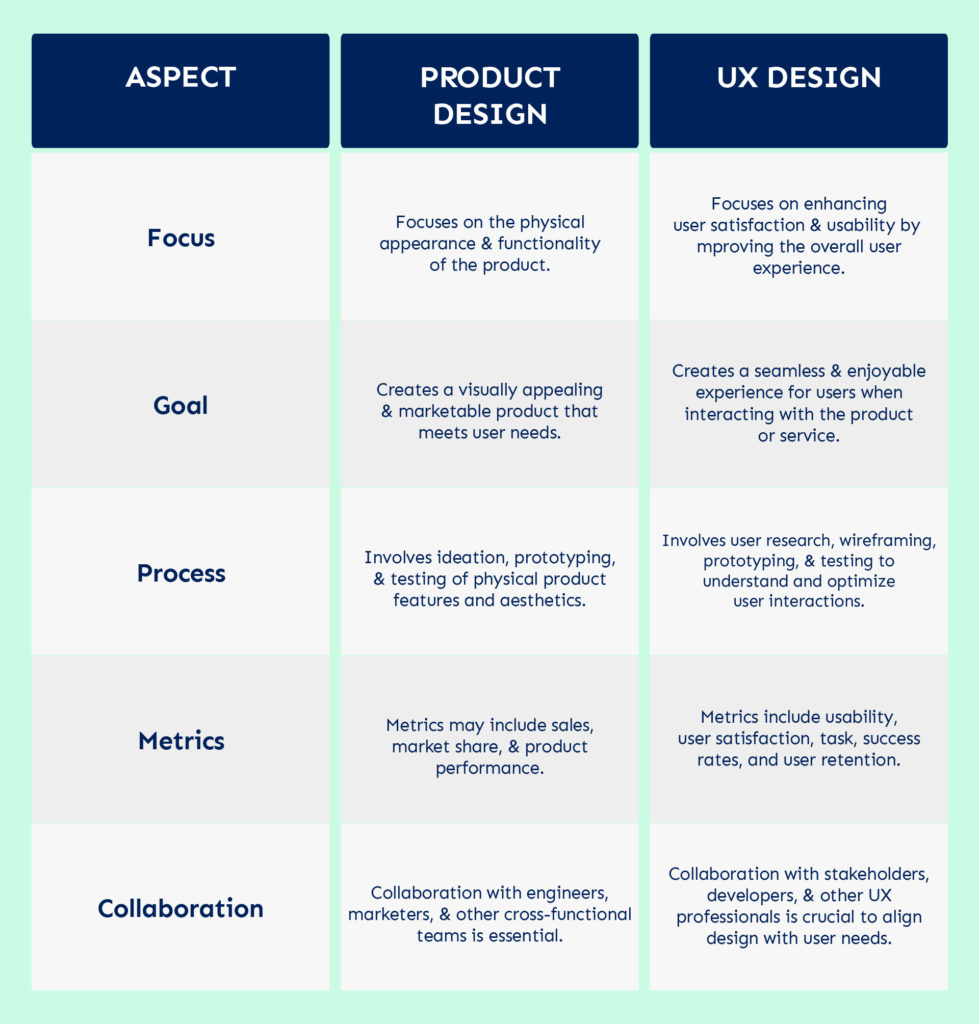
Product Design vs. UX Design: How These Disciplines Can Work Together
Now you know that product design and UX design have distinct focuses. They are not isolated from one another. In fact, they collaborate to create exceptional products and ensure the best user experiences.
Let’s explore now how these two disciplines can work together:
Collaborative ideation: During the ideation phase, product designers and UX can perform collaborative ideation to ensure that the functionality and aesthetics of a product align seamlessly with the user’s expectations and needs.
Prototyping and testing: In prototyping and testing, both Product and UX designers can participate and combine their expertise to refine the product.
Iterative improvement: As the company gets user feedback, both teams can work together to improve the product design as well as user experience.
Balancing form and function: Product designers ensure that the product looks and works beautifully. While UX designers ensure that the product is user-friendly and highly engaging.
Product design and UX design are not opposing forces. They are actually complementary elements that unite and produce a truly exceptional product or service.
Final Remarks
In this tech-savvy world, only creative products and designs capture the hearts and minds of users.
Whether you’re a business owner looking to improve your product’s quality or an aspiring designer, understanding the ins and outs of these designs is extremely important.
So, don’t wait for another day. Acquire product design services today and take your design game to the next level.

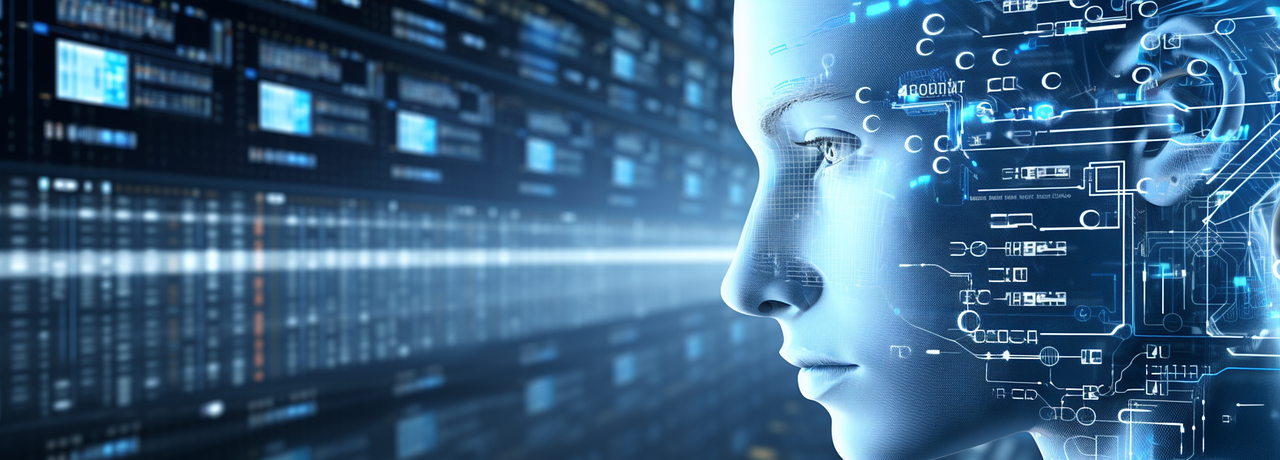
 [tta_listen_btn]
[tta_listen_btn]
 November 29 2023
November 29 2023

